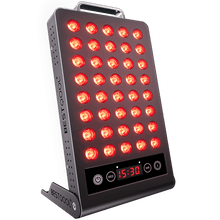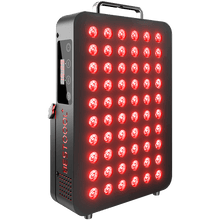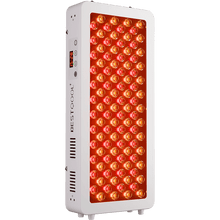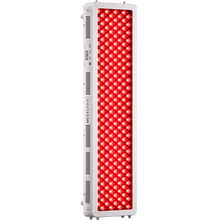Struggling to Stay Sharp in a Distracted World
In our fast-paced, hyperconnected lives, remaining mentally sharp is a challenge for many of us. It is of no surprise that lots of folks are looking at non-drug alternatives for enhancing focus—and red light therapy is having a moment. The red light has been known for a long time to have benefits of its own, including repairing skin and recovering muscle, and could also boost brain function through improving blood flow. But does red light help you think more clearly? Let’s dive in.

What Exactly Is Brain Fog and Why Does It Happen?
We’ve all had times when our thoughts seem to plod through mud. This feeling is commonly referred to as “brain fog” and can be experienced as difficulty concentrating, forgetfulness, sluggish mental processing, and a dull feeling in the head. Although not a medically recognized condition, brain fog is a reported symptom cluster that can reduce quality of life.
What causes it? The list goes on: lack of sleep, chronic stress, shifts in hormones, poor diet, or physical activity. All of these can decrease oxygen supply to brain cells, which interferes with mitochondrial function (our cellular energy house) and alters neurochemical balance. The result? A sluggish mind trying to stay awake, attentive, and emotionally stable.
An Introduction to Red Light Therapy
Red light therapy (RLT) is a therapeutic technique that uses red low-level wavelengths of light. As a popular tool in nature-based treatments, red light therapy works to soothe your skin, body, and brain. Unlike UV light, which can damage skin and DNA, red and NIR light can penetrate safely and deeply into the tissues without causing damage. These wavelengths are absorbed by the cellular structures, primarily the mitochondria, which are responsible for cellular regeneration and repair[1].
First developed by NASA to encourage plant growth and maintain astronauts’ health in space, red light therapy now has a myriad of wellness uses, everything from enhancing skin tone and inflammation reduction to quickening muscle repair. Now, scientists and biohackers have set their sights on how it might affect the health of the brain.
Why Blood Flow to Your Brain Matters So Much
Your brain needs a steady, ample supply of oxygen and nutrients to function well. This essential system is delivered by cerebral blood flow—the constantly shifting movement of oxygenated blood through the intricate network of vessels in your brain.
When blood flow to the brain is normal, neurons get the fuel they need to fire properly, maintain and build new connections, and clear away metabolic waste. It keeps your mind sharp, your memory strong, and your mood stable. On the flip side, even minor reductions in cerebral flow to the brain can cause slower processing speed, brain fog, and fatigue.
How Red Light Therapy Can Boost Cerebral Blood Flow?
Red light therapy affects cerebral circulation, which begins at the cellular level. When red or near-infrared light passes through the scalp and skull and reaches brain tissue, it has several effects, one of which is to boost the energy production of cell mitochondria. That energy production is triggered by a light-sensitive enzyme called cytochrome c oxidase. This uptake enhances the activity of the mitochondria, resulting in a higher yield of ATP, the cell’s natural energy.
Further studies indicate that red light therapy might also increase the production of nitric oxide (NO), a molecule that relaxes and expands the blood vessels. This vasodilation effect means that more blood can flow to the brain. Better circulation means faster flow of oxygen and nutrients—exactly what sluggish neurons need to maintain peak performance.

What The Research Says About RLT and Focus?
The idea may sound futuristic, but research on red light therapy for cognitive function is on the rise. Preliminary studies have yielded favorable data.
One interesting study published in the Journal of Neuroscience Letters discovered that even healthy volunteers who received transcranial photobiomodulation enjoyed big lifts in both attention and memory performance. Among participants who received light therapy, performance of cognitive tasks was better than among those who did not[2].
More recently, investigators have sought to expand the use of red light in clinical populations. Small trials have tested its use in people who suffer from traumatic brain injury, stroke, and even Alzheimer’s disease—yielding early results that suggest enhanced alertness, quality of sleep, and mental clarity[3] [4].
Unlocking More Than Just Focus with Red Light
What’s interesting about red light therapy is that its benefits are not limited to improving focus.
Improved mitochondrial function and blood flow may help stabilize mood, decrease mental fatigue, and provide emotional resilience with RLT. Some users also report feeling calmer and more grounded after regular sessions, which is consistent with studies that have found increased serotonin levels and decreased inflammation from light therapy.
There is also increasing interest in the role of red light in neuroprotection—an effect that preserves brain health over time. Blood flow to the brain diminishes with age, and its natural slowing can lead to problems with cognition, including memory loss. Boosting the circulation and cellular energy in this area may be one preventive approach to this decline.
Red light’s role in neuroprotection is also attracting more attention. Blood flow to the brain is naturally reduced over time with the aging process, and it can be associated with memory lapses and cognitive slowing. Supporting circulation and cellular energy might be a proactive way to minimize this fall.
Is Using Red Light Therapy for Your Brain Safe?
Safety is a priority when it comes to any new wellness technology. The good news is that red light therapy has a great safety record when used correctly. Red and NIR wavelengths are non-ionizing, unlike UV light, so they don’t harm DNA and raise the risk of cancer. And because the RLT device doesn’t involve heat or electrical waves, it is classified as noninvasive and gentle.
Adverse effects are uncommon but may be minor headaches or fatigue after excessive use —usually a cue to limit the session time or frequency. Although safety hazards are rare, users should not look directly at the light and should follow manufacturer protocols when utilizing their home device. Professional-grade devices have timers and safety controls.
A Brighter Future for Mental Clarity
We are living in an age when brain performance is valued like never before. With modern stressors, it’s no wonder that brain fog has become a daily battle for so many. Thankfully, red light therapy is a science-backed, noninvasive solution that could illuminate a path to better clarity and focus.
RLT increases cerebral blood flow and cellular ATP production, meaning it can help to fine-tune your brainpower, improve mood, and promote brain health regardless of age. Though more research will be necessary, so far, the results have been promising—and the future of light-based brain support appears bright. Although further research is required, these early findings are encouraging—and the future of light-based brain support seems to be shining bright.
Whether you’re trying to increase focus at work, recover from mental fatigue faster, or even just boost mental clarity in general, red light therapy offers considerable worth in adding to your wellness toolbox.
References
- Cleveland Clinic. “Red Light Therapy: Benefits, Side Effects & Uses.” Cleveland Clinic, 1 Dec. 2021, my.clevelandclinic.org/health/articles/22114-red-light-therapy.
- Barrett DW, Gonzalez-Lima F. Transcranial infrared laser stimulation produces beneficial cognitive and emotional effects in humans. Neuroscience. 2013;230:13-23. doi:10.1016/j.neuroscience.2012.11.016
- Bowen R, Arany PR. Use of either transcranial or whole-body photobiomodulation treatments improves COVID-19 brain fog. J Biophotonics. 2023;16(8):e202200391. doi:10.1002/jbio.202200391
- Hamblin, Michael R. “Shining light on the head: Photobiomodulation for brain disorders.” BBA clinical vol. 6 113-124. 1 Oct. 2016, doi:10.1016/j.bbacli.2016.09.002














 Small
Small

 Moderate
Moderate

 Moderate
Moderate

 Moderate
Moderate

 Full
Full



